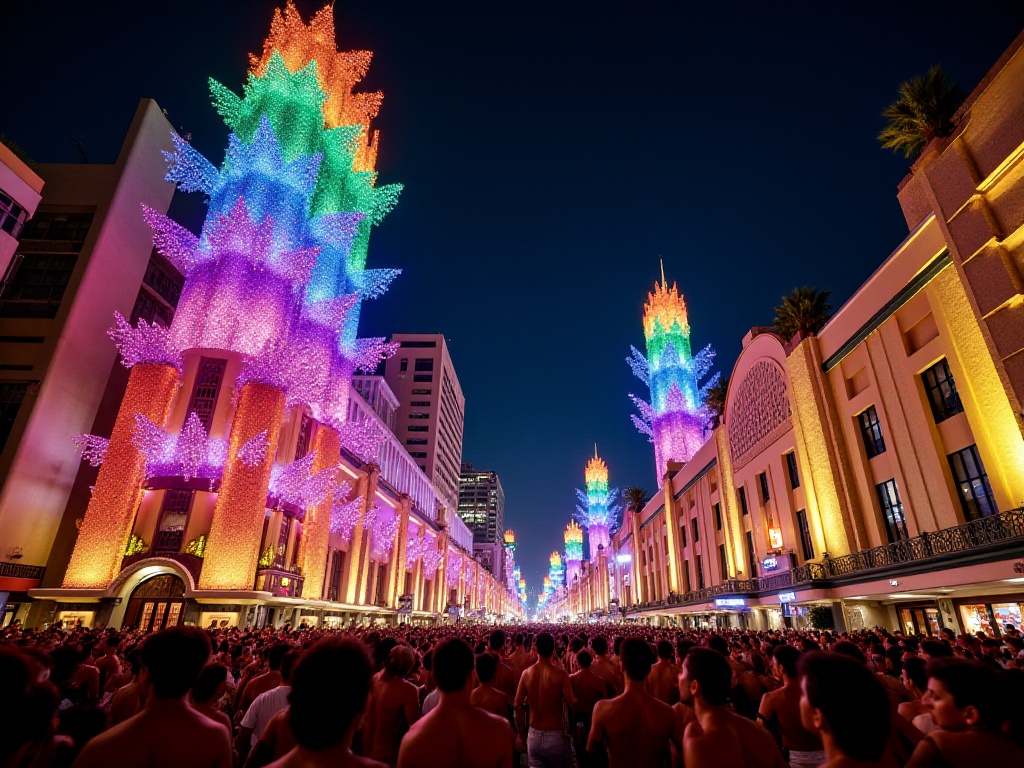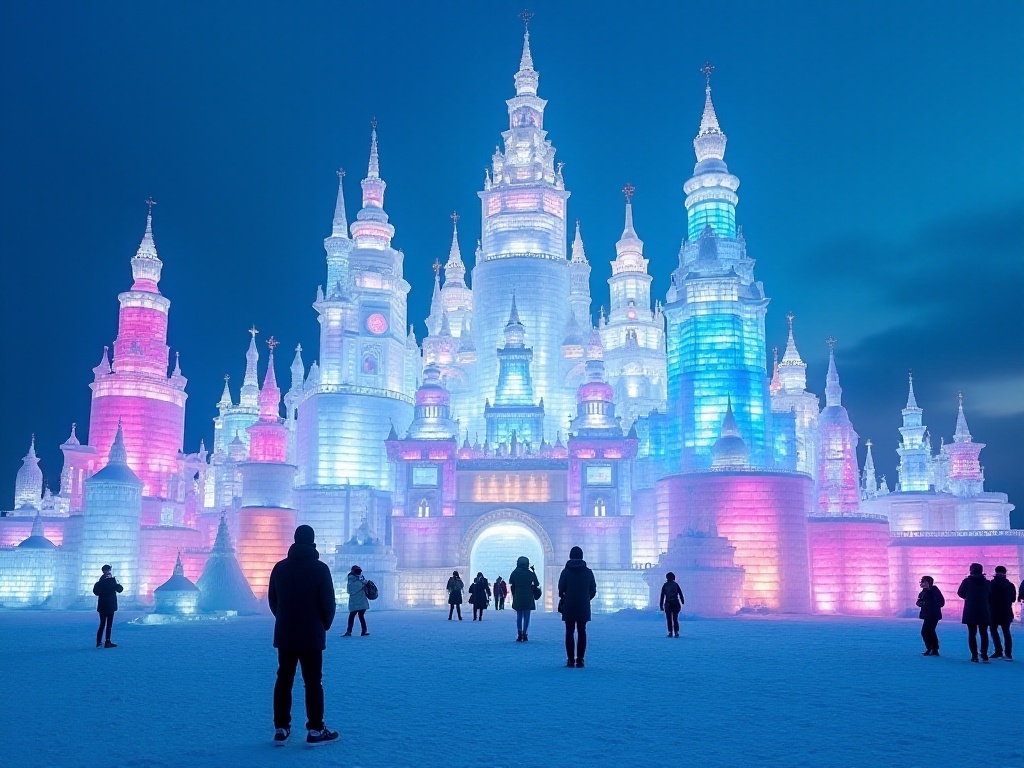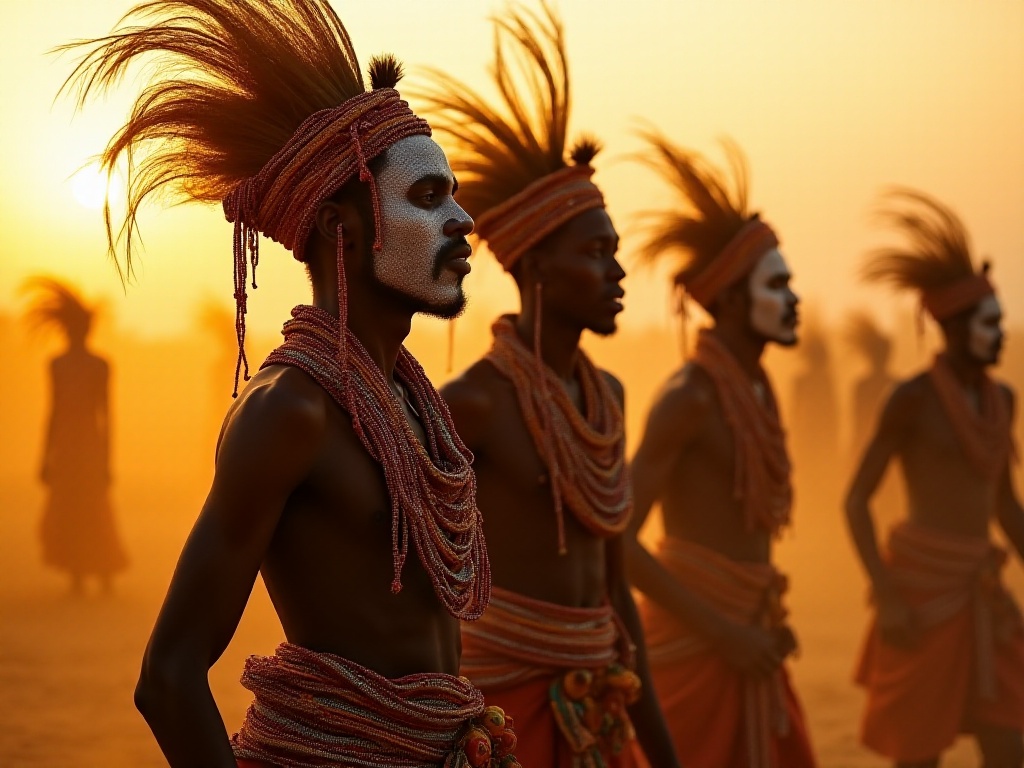Origins
Speaking of the world's largest religious pilgrimage, we must discuss India's Kumbh Mela. As a young travel enthusiast, I was truly shocked by the scale of this event. Every 12 years, along the Ganges River in India, a massive religious festival takes place with over 120 million participants - a number that's hard to comprehend. This is more than Japan's entire population and exceeds the total population of many countries.
This festival is truly unique, not just a simple religious event but rather a cultural feast that transcends time and space. Imagine the scene of hundreds of millions of people gathering together - the atmosphere is absolutely stunning. As a traveler who loves exploring different cultures, I believe this is definitely a must-experience event in one's lifetime.
Time and Location
The Kumbh Mela rotates interestingly between four holy cities in India: Allahabad, Haridwar, Nashik, and Ujjain. Each city has its unique historical and cultural background, but the most notable is the Kumbh Mela held in Allahabad every 12 years.
The next Kumbh Mela in 2025 will be held in Haridwar. As a young person who frequently travels abroad, I suggest starting to plan your trip now. Haridwar is located in northern India, marking the first point where the Ganges River enters the Indo-Gangetic plains from the Himalayas - a truly unique geographical location. The city is surrounded by lush forests and rolling mountains, creating a spectacular landscape.
Every evening at Haridwar's famous Har Ki Pauri steps, there's a ritual called "Aarti." Thousands of oil lamps float on the Ganges, accompanied by Sanskrit chants and bell sounds, creating a breathtakingly beautiful scene. This unique spiritual atmosphere is something I've never experienced anywhere else in the world.

Festival Origins
The origin story of Kumbh Mela is really interesting, sounding like an epic mythological movie. According to legend, in ancient times, gods and demons began a massive churning of the ocean to obtain the elixir of immortality. This process lasted for a thousand years before finally producing the precious nectar.
But things didn't end there. During the transport of the nectar, the sacred pot containing it was accidentally spilled. The four places where the nectar fell became today's four holy cities where the Kumbh Mela is held. This story reminds me of the Chinese legend of Chang'e flying to the moon, as both involve the pursuit of immortality.
Every civilization seems to have similar mythological tales, and this cultural commonality is truly fascinating. In Hindu tradition, this story carries profound religious significance. Devotees believe that pilgrimaging to these holy sites during the Kumbh Mela brings special spiritual power and purification.

Pilgrimage Experience
Last year, I was fortunate to attend the Kumbh Mela in Allahabad, and the impact remains unforgettable. From morning to night, the banks of the Ganges were packed with pilgrims from all over India. Among them were elderly people, young folks, and even mothers carrying infants. Everyone, regardless of wealth or status, walked barefoot on the holy ground.
What impressed me most were the auspicious moments (Shahi Snan). During these times, millions of devotees would simultaneously rush into the Ganges for bathing. They believe that bathing in the holy river during these special moments can wash away sins from previous lives. Watching so many people enter the river with deep devotion, the power of collective faith was truly overwhelming.
The sadhus on site were eye-opening. These ascetics' practices went beyond ordinary imagination. Some were naked, covered in white ash, looking like beings from another world. Some could maintain the same position without moving for many years, showing incredible willpower.
Most surprising were the sadhus who could walk upside down. Their extreme form of practice demonstrated an incredible devotion to their faith. Although as a modern young person, I might not fully understand their choices, I must say their firm belief is truly awe-inspiring.
During the festival, I saw many interesting rituals. Some people meditated by the river, some recited scriptures, others practiced yoga. The entire riverbank was filled with various religious activities, forming a unique cultural landscape. Even non-believers would naturally slow down in this atmosphere to feel its sanctity.

Culture Shock
As a young Chinese person accustomed to modern urban life, I experienced considerable culture shock at the Kumbh Mela. Most striking was the locals' attitude toward death. By the Ganges, you could often see people scattering the ashes of the deceased into the river. For them, this isn't a sad event but a sacred ritual helping souls achieve liberation.
The various religious activities by the river were also eye-opening. Some people performed complex rituals, others were deeply absorbed in meditation, and some were doing various yoga poses. This intense religious atmosphere was truly a new experience for someone raised in a secular society.
Here, I also witnessed the unique lifestyle of Hindu devotees. Many pilgrims chose to camp by the river, living extremely simple lives. They might spend the day waiting in the scorching sun for a chance to bathe, then sleep on the ground at night. This choice to temporarily abandon modern comforts gave me a new understanding of the power of faith.
The locals' dietary habits were also special. Many pilgrims were strict vegetarians, believing this maintains physical and spiritual purity. Street vendors selling traditional Indian snacks were everywhere, with the aroma of spices creating a unique atmosphere.

Practical Tips
Based on my personal experience, I especially want to remind friends planning to attend the Kumbh Mela to prepare thoroughly in advance. First, regarding accommodation, I recommend booking rooms at least six months ahead. During the festival, accommodation prices in Allahabad skyrocket, with some hotels charging up to five times their usual rates.
If you're on a budget, consider staying in tent camps. Camps usually come in various tiers, from luxury to basic facilities, with prices ranging from $50 to $500 per night. Luxury tent areas are equipped with air conditioning, private bathrooms, and 24-hour hot water, while basic camps are relatively simpler.
However, regardless of your accommodation choice, be prepared to adapt to India's climate. If you're going to Haridwar, there are significant temperature differences between morning and night in winter, so bring enough warm clothing. In summer, pay attention to sun protection and hydration, as India's sun can be very intense.
Special attention is needed regarding food. Although street food stalls during the festival are tempting, it's best to eat only at proper restaurants to avoid getting sick. I recommend carrying a water purifier or only drinking bottled water - never drink tap water or river water.
Additionally, it's advisable to carry common medications like anti-diarrheal medicine, cold medicine, and sunscreen. Although camps usually have medical points, it's safer to bring your own medicine. For female travelers, it's better to travel with companions, as crowded places can sometimes be less friendly.
Regarding transportation, research the routes from your accommodation to the riverbank in advance. Many roads will be controlled during the festival, so know the control times and alternative routes. If possible, stay within walking distance of the river to avoid traffic congestion.

Deep Reflection
After attending the Kumbh Mela, I've had deeper thoughts about faith. In this era of abundant material life, why are so many people willing to give up modern comforts to participate in such events?
Perhaps the answer lies in humanity's deeper spiritual needs beyond material requirements. In this fast-paced society, our souls seem to need a ritual where we can temporarily pause and purify ourselves. This ritual doesn't necessarily need to be religious, but we need something that allows us to temporarily escape daily life's constraints and find inner peace.
The Kumbh Mela isn't just a religious festival; it's like a mirror reflecting humanity's eternal pursuit of spiritual solace. Here, you can see the most basic faith, the most sincere devotion, and the most impressive collective memory. These elements combine to create a unique spiritual atmosphere.
As a young person, I find such cultural experiences particularly valuable. They give us opportunities to step outside our usual life circles and experience completely different lifestyles and values. These experiences can broaden our horizons and enrich our life experiences.
If you're looking for a unique cultural journey, I strongly recommend adding the 2025 Kumbh Mela to your travel list. Such a grand gathering, if missed, won't come again for 12 years. Moreover, with the advancement of modernization, these traditional cultural expressions might gradually change, making it more worthwhile to experience now while it maintains its relatively original form.
At the Kumbh Mela, you can not only see India's most representative religious culture but also feel humanity's most authentic side. Watching millions gather with devotion creates an impact that no photo or video can fully capture.
This experience taught me that travel isn't just about sightseeing; it's more about experiencing different lifestyles and understanding different ways of thinking. Through participating in such cultural events, we can better understand the world's diversity and reflect on our own lifestyle.
Finally, I want to say that the Kumbh Mela is worth visiting whether you're religious or not. It's not just a visual feast but also a rare spiritual journey. Here, you might discover a completely different world and find new perspectives on life and faith.


